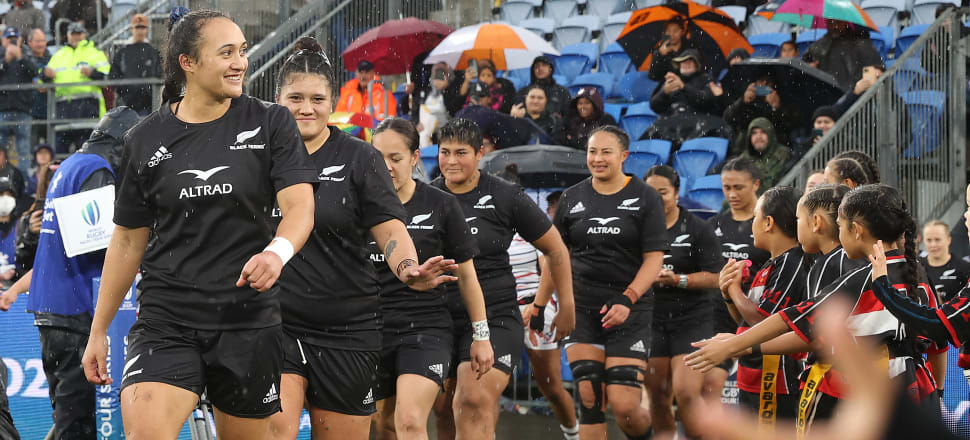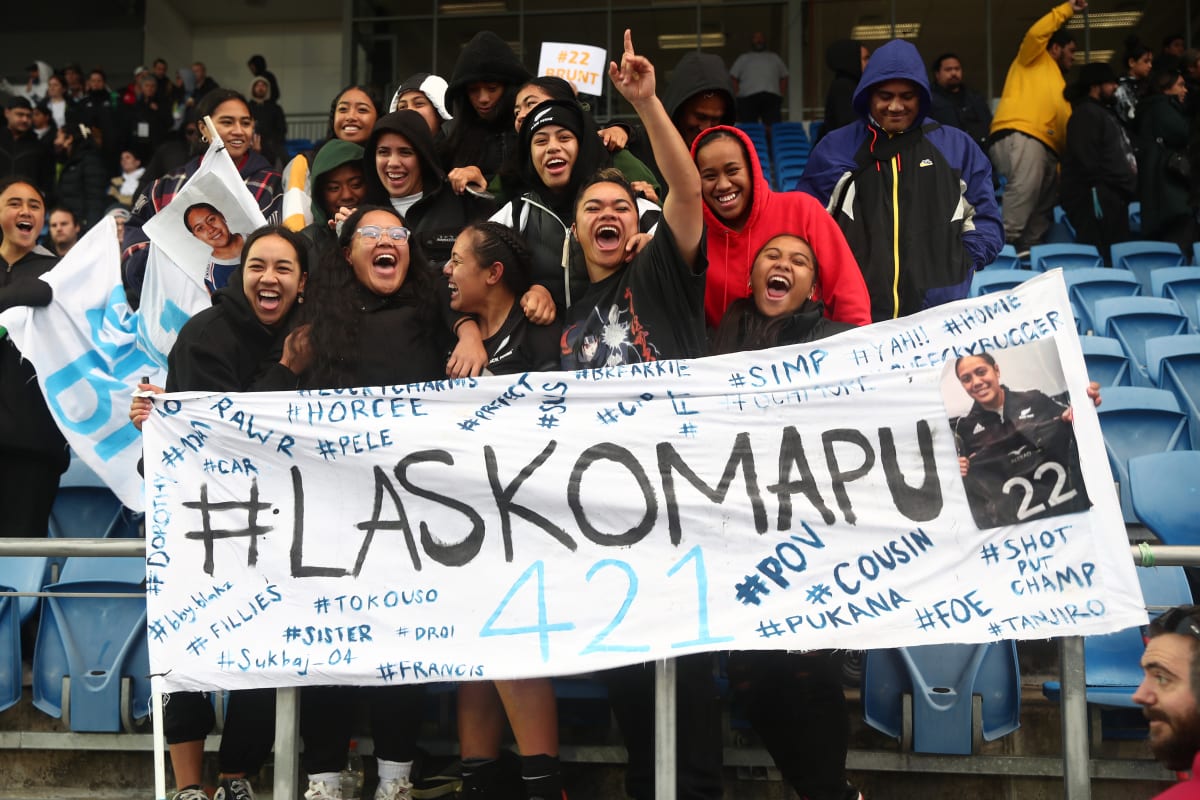
With under a month to kick-off in the Rugby World Cup, tournament head Michelle Hooper tells Jim Kayes why all games will be played in NZ's north, and how this will be the tipping point for change in the women's game.
To many, it seems a wasted opportunity that next month’s Rugby World Cup is confined to the upper north of Aotearoa.
Tournament venues for the month-long competition are limited to Whangārei and Auckland’s Waitākere Stadium and Eden Park. But would it have been better to see games also showcased at the picturesque grounds in Queenstown and Tauranga, or under the roof in Dunedin?
The budget could have been spent on domestic travel, World Cup tournament director Michelle Hooper explains, but it's been better used elsewhere, and she stresses the event is heading in the right direction.
She noted the last World Cup, in 2017, was held in Dublin and Belfast, with the athletes accommodated in university halls. This time, the teams are being put up in hotels.
“I would have loved to have taken the tournament to other parts of New Zealand, and in the future we can,” she says. “But having a smaller footprint will enable us to make a bigger impact.
“It enables us to do what we want to and super-charge this tournament to really be that shifting point for the women’s game globally.”
Hooper is confident - if not bullish - that the tournament kicking off on October 8 will be transformational for women’s rugby.
“We are carving our own path for rugby which is different to football. International football is on a much different trajectory than rugby. Rugby is still in its infancy in terms of turning the corner and putting as much kudos on the women’s game as there is on the men’s game,” she says.
“But this tournament will absolutely be the tipping point for that change for rugby.
“We are creating a product here that wasn’t done in 2017 and has never been done for the women’s game before.”

The World Cup will catapult the game onto the path that’s seen football in Europe watched by record crowds, Hooper reckons.
“The change since 2018 for women’s sport has been exponential,” she says. “It’s riding this incredible wave and rightly so - it’s about time - and we are part of that globally.
“Football has tipped. When you are getting crowds of 90,000 to matches in the women’s game, they are there. They’ve made that jump.”
Rugby, Hooper says, has crowds of 15000 at games in Europe “but hasn’t gone to that next level”.
“It’s what we want to do with the Rugby World Cup - take it to that next level.”
England’s Lionesses beat Germany, 2-1, last month to become European football champions for the first time, and the 87,192 fans at Wembley were the third largest crowd at any European football game this year.
Lioness defender Millie Bright celebrates Euros victory in front of a packed Wembley crowd.
The top two crowds were also for women’s games - with 91,553 there to watch Barca face rivals Real Madrid in the quarterfinals of the Women's Champions League, and 91,648 for Barca’s game against Wolfsburg in the first leg of the semis.
Such crowds at football matches in Europe could raise expectations beyond what’s reasonable for the Rugby World Cup in New Zealand.
The tournament is on track to host the largest ever crowd for a women’s test with almost 20,000 tickets sold for the opening day. But this is actually for three matches.
The reality is women’s rugby games are poorly attended in New Zealand despite what seems to be strong support for the game anecdotally and on social media.
The Black Ferns website says 3500 were at the test against the USA in Whangārei and 1000 for the game against Canada at Auckland’s Waitākere Stadium - both venues where World Cup games will be played.
There were 2000 for the match against Australia in June played in terrible weather in Tauranga, and 4000 for the win against Australia in Christchurch last month.
So getting bigger crowds to the World Cup matches will require something more than just the games.
Rita Ora, recently in NZ with partner Taika Waititi, is the headline act on the opening day of the RWC21
It’s why the organisers have signed British singing sensation Rita Ora to perform at Eden Park on the opening day. Kiwi band Shapeshifter will play at the semifinals and pop singer Benee will return home to play at the final.
“We want to bring women’s rugby out of the shadows and into the spotlight,” Hooper says. “We know the rugby is going to be entertaining, but we also need to get people through the gates so we will be entertaining people on and off the field.”
The success of the men’s World Cups relies heavily on how the home team goes. Get the hosts into the playoffs and ticket sales will be strong. If they make the final, you’re onto a winner financially. The same applies to the women.
The Black Ferns should make the semifinals, but after their four defeats to England and France last year, they are not favourites to win their sixth title - at what will be the first World Cup in Aotearoa.
But Hooper needs them to play well, and to play a style of rugby people want to watch.
“It [women’s rugby] is almost like a start-up business and you improve the product as you go. With the Black Ferns’ performances and the excitement about the way they’re playing at the moment, and their improvement game on game, it’s really helping to compel people to want to be in the venue and to celebrate them come Rugby World Cup time.”
Although this Rugby World Cup is about 12 international teams, you can’t go past the fact New Zealand is hosting the Rugby World Cup because of the legacy of the Black Ferns jersey, Hooper says.
The Black Ferns will be followed by their personal bands of supporters during the RWC
“They’ve won the Rugby World Cup five times and every single one of those wins has been offshore. They’ve never been able to play in front of their whānau and friends on home soil,” she says.
“So putting on a Rugby World Cup fitting of their performances and in recognition of what they’ve meant to the women’s game globally is so important.
“And it’s the Holy Grail for teams to come and play rugby here. For those 11 teams coming to compete, this is their dream come true.”
Hooper’s ‘dream come true’ is a sold-out Eden Park on Saturday, October 8 - along with less tangible goals.
“All of the teams having the best time of their life and them saying that New Zealand delivered in terms of the manaakitanga and sense of love for rugby, and an incredible final to finish on, would be outstanding,” she says.
But it’s attendance by which Rugby World Cups are judged a success, especially financially for the host union.
With around 20,000 tickets sold for the opening day triple-header and a further 10,000 to the other games, it leaves Hooper still 70,000 short of the ambitious 100,000 ticket tournament target.
Tickets are well-priced, with a child’s admission selling for $5 and adults from $10-$40. “There’s not a financial reason why people can’t come,” Hooper says, “so it’s about understanding that it’s on, and converting that interest into attendance.
“I guarantee the place to be in New Zealand this year will be the women’s Rugby World Cup.”






